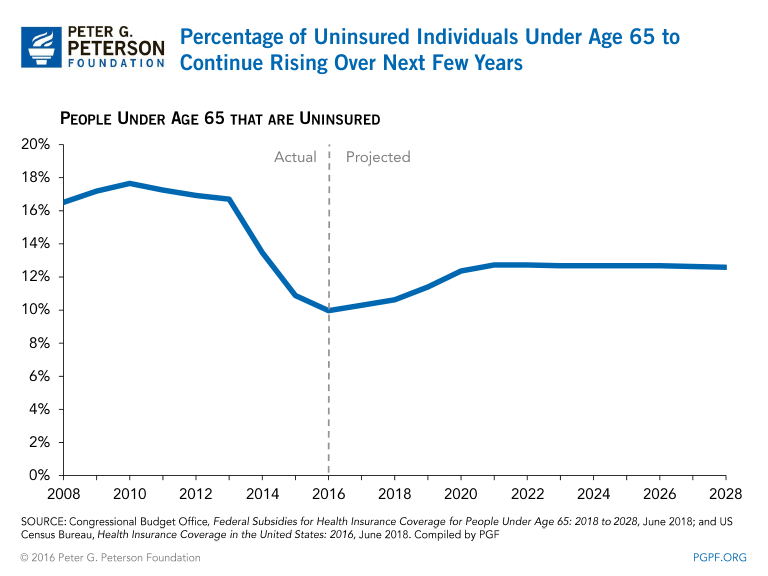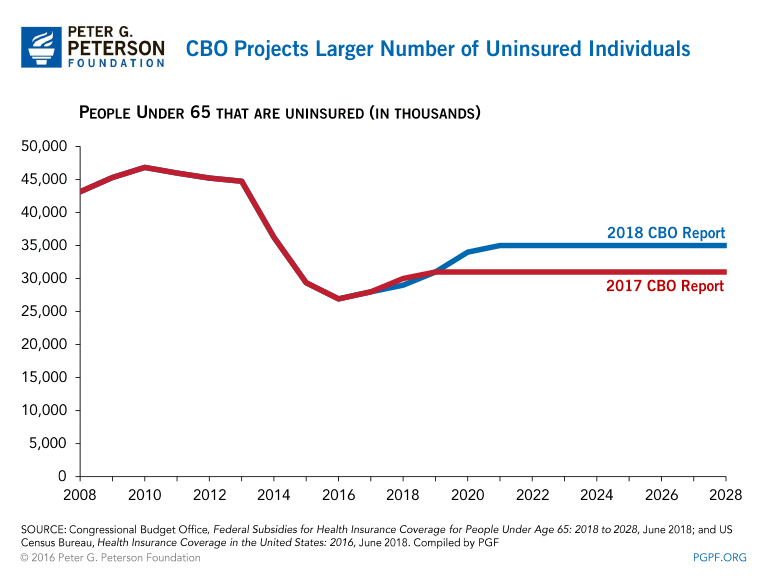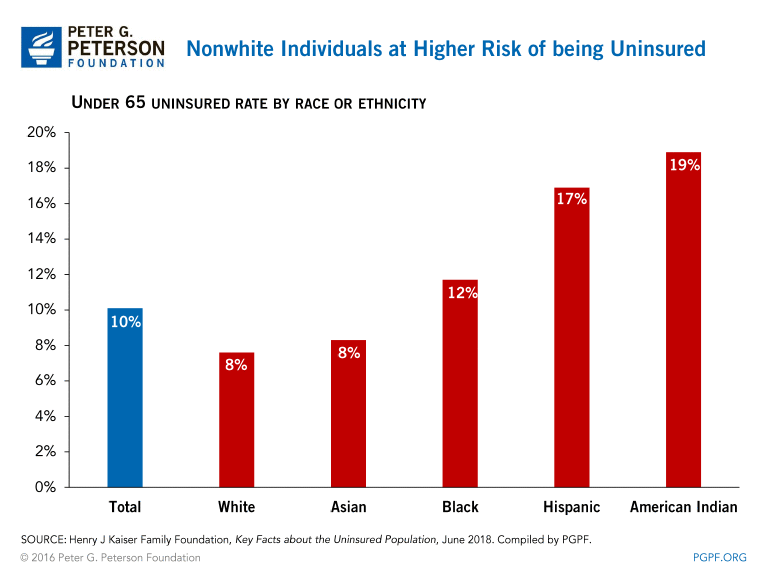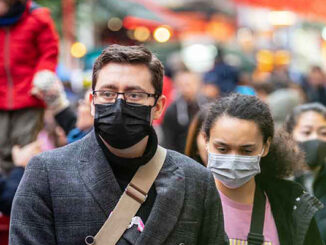
The number of uninsured Americans is rising, and will continue to rise in the years ahead, according to a recent report from the Congressional Budget Office (CBO). The report, “Federal Subsidies for Health Insurance Coverage for People Under Age 65: 2018 to 2028,” indicates that in 2017, the percentage of individuals without coverage rose for the first time since 2010. That increase is projected to continue over the next four years due to the elimination of the penalty associated with the individual mandate and the expectation that healthcare premiums will continue to rise faster than wages. (Health insurance coverage for people over age 65 is not addressed in the report because they are eligible for Medicare).
Between 2010 and 2016, the share of people under age 65 without health insurance declined annually. In 2010, nearly 18 percent of the under-65 population, or 46 million people, were without insurance. By 2016, that share had dropped to 10 percent and the total number to 27 million people.
CBO estimates that in 2017 the number of uninsured people under age 65 rose by 1 million people and they anticipate the total to rise by another million people this year. By 2028, they project that the number of uninsured will reach 35 million. In terms of the share of the under 65 population, CBO estimated a 10 percent uninsured rate for 2017 and anticipate that it will rise to nearly 13 percent by 2028.

The projected increase in the number and proportion of uninsured people is largely due to two factors:
- Removal of the penalty on the individual mandate from the Affordable Care Act. Without a penalty, healthier people are less likely to buy insurance, particularly as the premiums become more expensive.
- Rapidly increasing premiums in the nongroup market (health insurance not provided by the government or one’s employer). The average premium for a benchmark plan in the nongroup market is 34 percent higher this year than it was in 2017. It is expected that premiums will increase by a further 15 percent in 2019 and then by about 7 percent annually between 2019 and 2028. That pace far outstrips the average wage growth in the United States, which was around 3.4 percent on average in the last 12 months, according to the Bureau of Labor Statistics.
Number of Uninsured Individuals Higher than Previously Estimated
Compared to the version of the report that CBO issued last year, the projected number of uninsured under age 65 people in 2027 (the last year that the previous report projected) has increased by about 4 million. Both the 2017 and 2018 CBO estimates projected higher premiums in the future, but the more recent report incorporated the removal of the penalty associated with the individual mandate, which was part of the Tax Cuts and Jobs Act.

Nonwhite Individuals More likely to be Uninsured
According to the Henry J. Kaiser Foundation, nonwhite individuals were at a higher risk of being uninsured in 2016. Although such individuals made up just over 40 percent of the population under age 65 in the U.S., they accounted for over half of the uninsured. In particular, individuals identifying as American Indian (19%), Hispanic (17%), or Black (12%) had a significantly higher than average likelihood of being uninsured.

Improving our healthcare system is critically important to our nation’s long-term economic and fiscal well-being. Learn more about healthcare spending in the United States at Finding Solutions: Healthcare or Infographic: U.S. Healthcare Spending.



